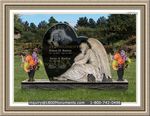|
Details To Expect When Engaging Jewish Funeral Traditions
It is a Jewish funeral traditions not to leave the deceased unattended. The family or those conducting the funeral services must provide a Shomer, or watchmen, who will sit with the body until the burial. The very first person to be called upon a death is the rabbi, who decides upon a time for funeral proceedings. Funerals are typically held in the temple or synagogue, although many Jewish families are now opting for a graveside service only.
Jews do not believe in viewing the body after death; it is disrespectful because the deceased person cannot look back at you. Therefore, Jewish funerals are usually closed casket.
Unless it is required by local laws, Jews do not take part in the embalming process, which is used for sanitation and temporary preservation of the body. Instead, the sacred society, called the Chevra Kadisha, prepares the body for burial. They perform the Taharah, a type of Jewish purification.
The body is bathed and dressed in shrouds, called Tachrichim, which is the traditional burial garment. It is a simple garment with no pockets that symbolizes the fact that we take nothing with us when we leave this world and that we will be judged by God on our deeds and merits and not material possessions.
While families choose their own caskets, Jewish tradition calls for unadorned caskets made of wood that contain no metal. The family also decides on funeral details, but there are typically no floral arrangements as this is seen as unnecessary and frivolous.
The funeral typically takes between 20 and 30 minutes in which the rabbi with conduct a reading of the Psalms, other chosen Scripture readings, and a reading of the eulogy. Prior to or following the service, family and other mourners conduct the K'riah, or rendering of the garment, where they tear their clothes or place a black ribbon on their clothes. This shows others that they are in mourning for the deceased. These Jewish funeral traditions have been somewhat modified over time, but are generally followed by most Jews.
|
|



























